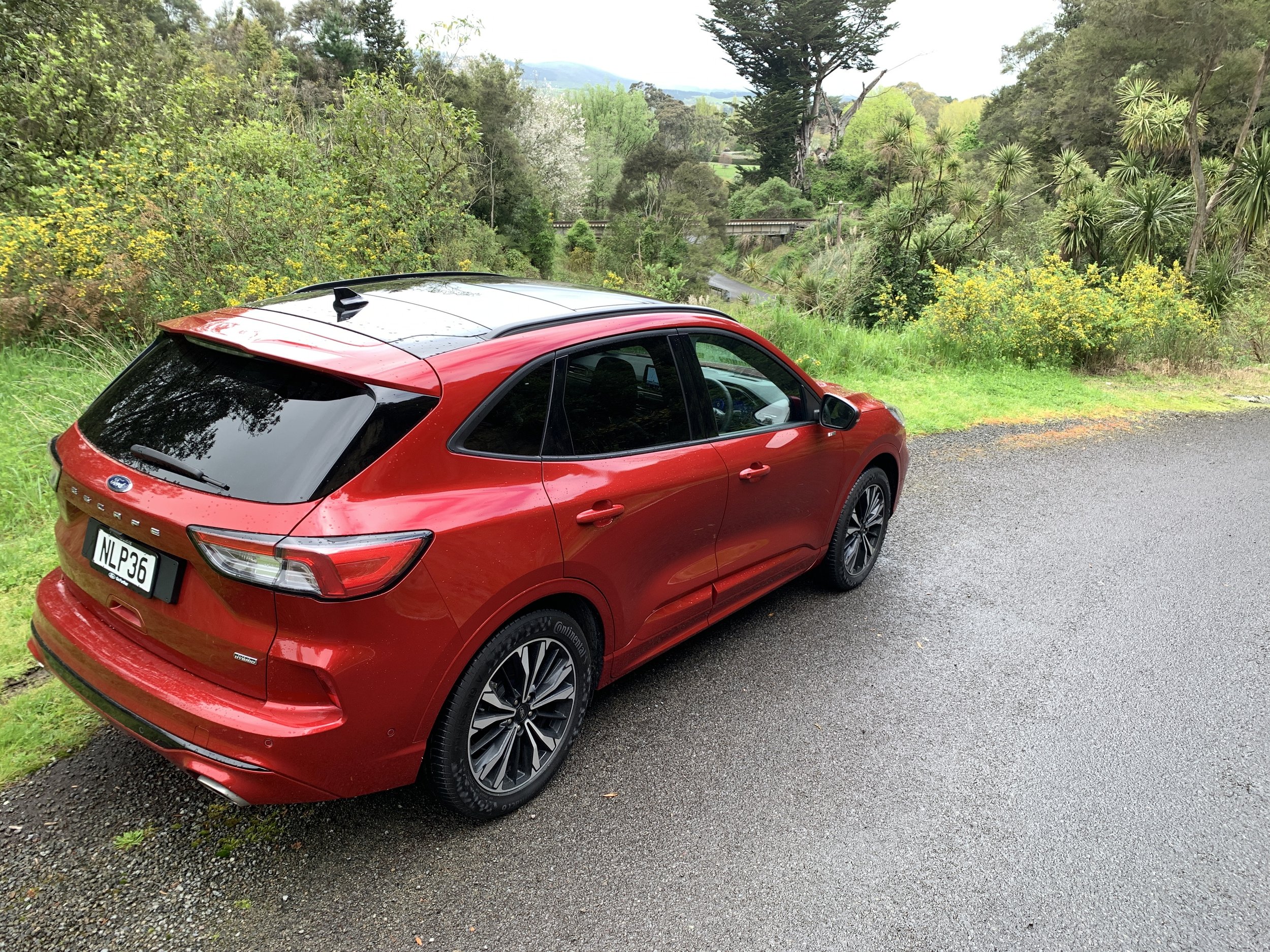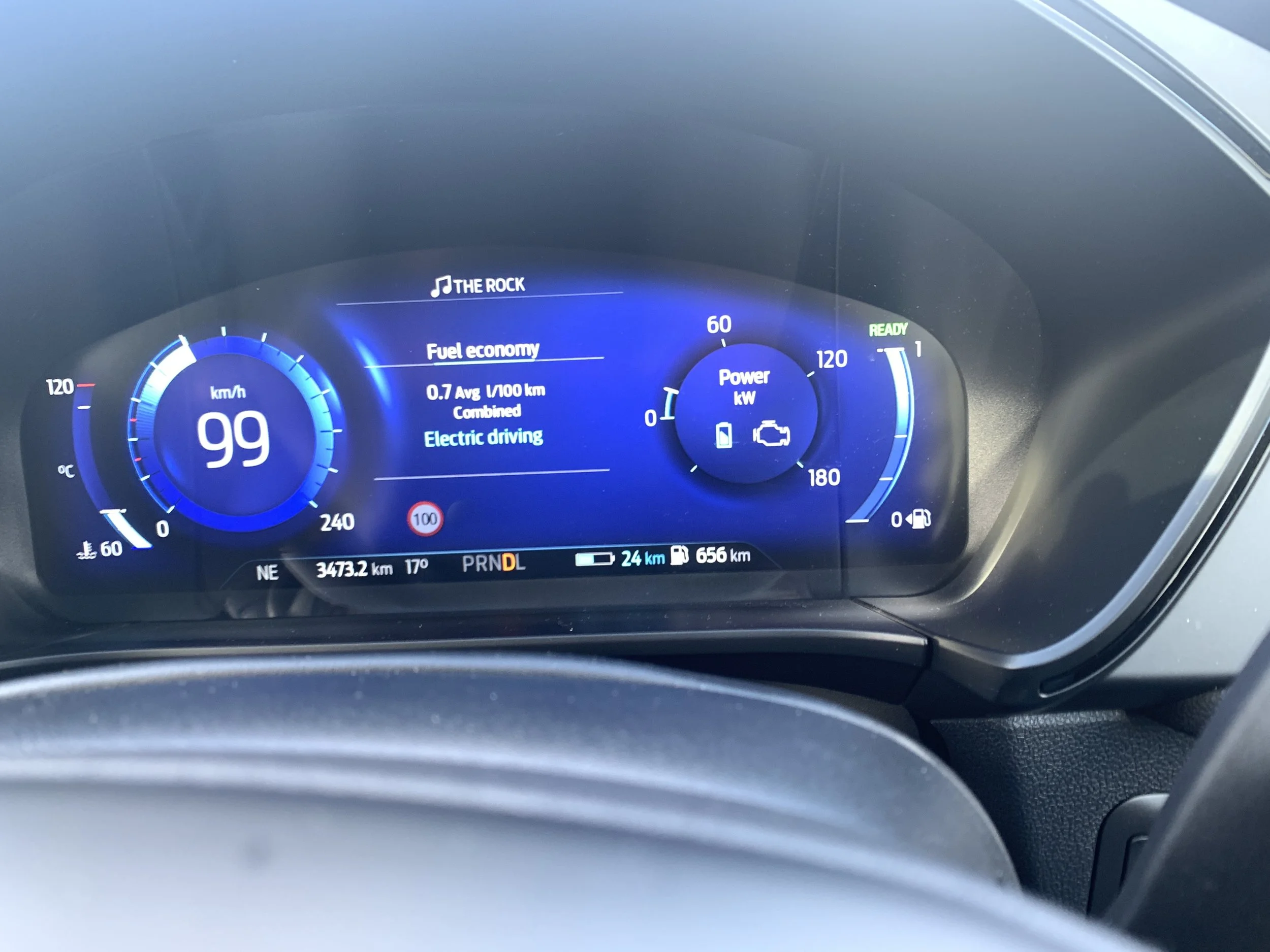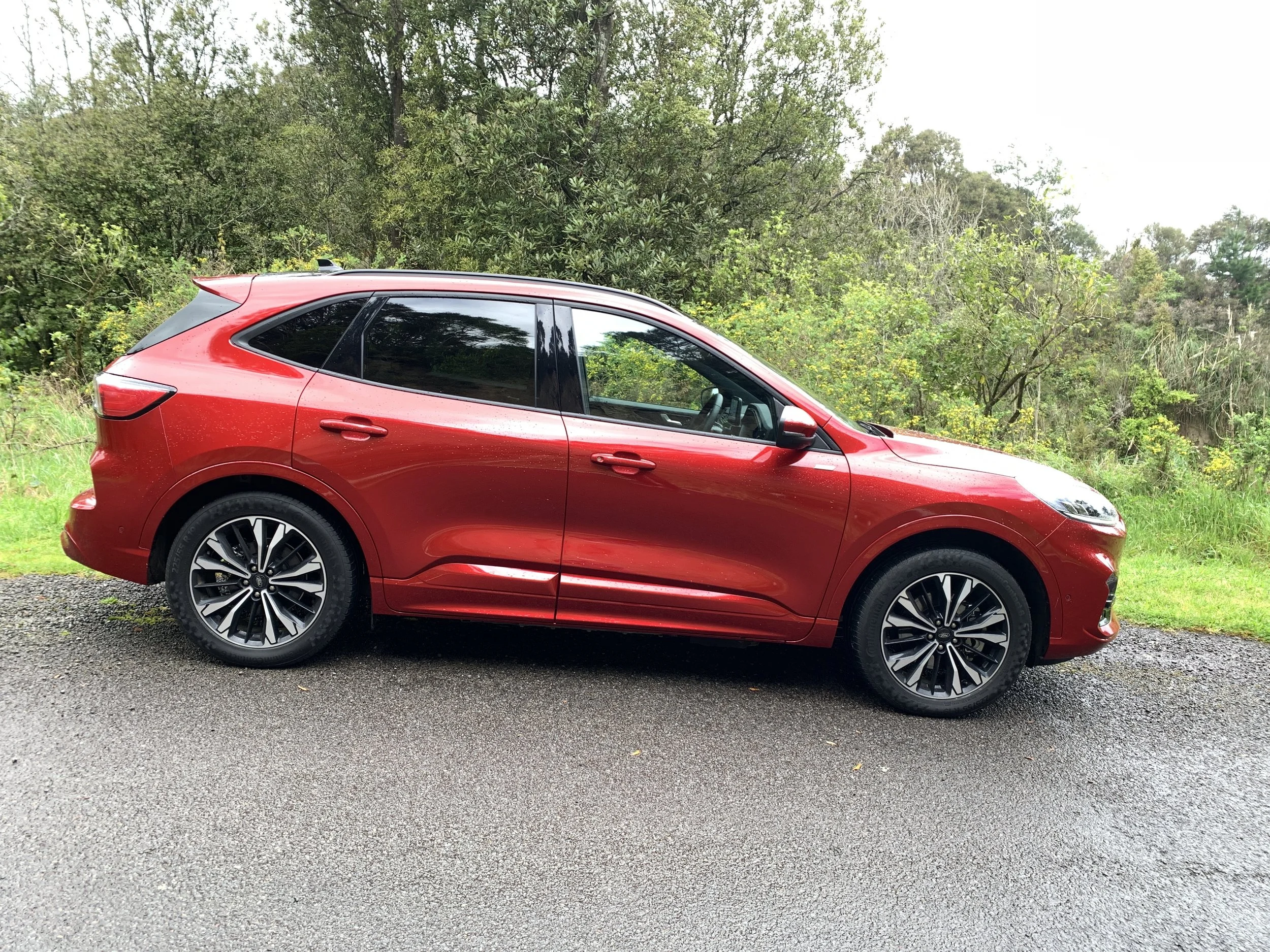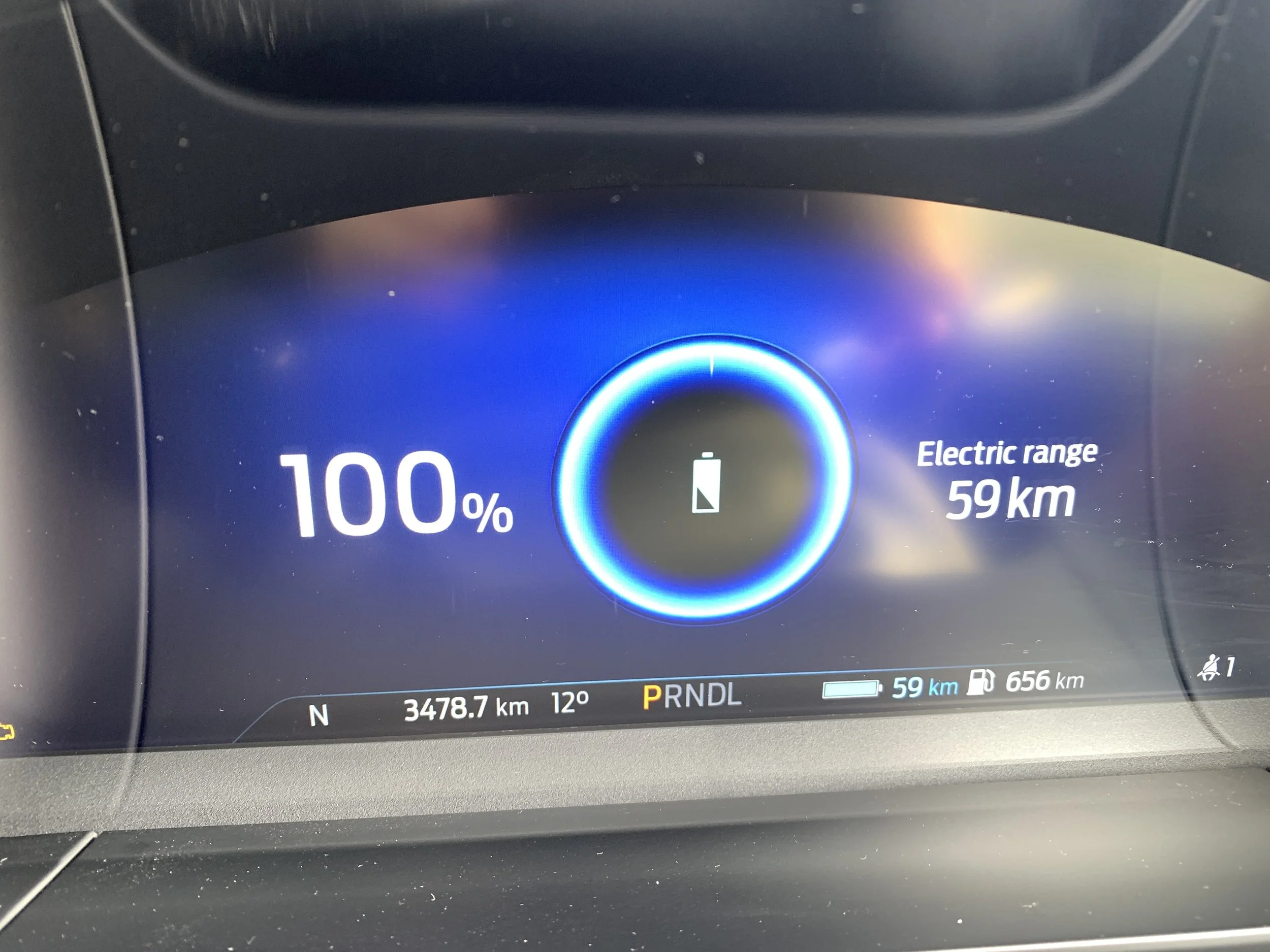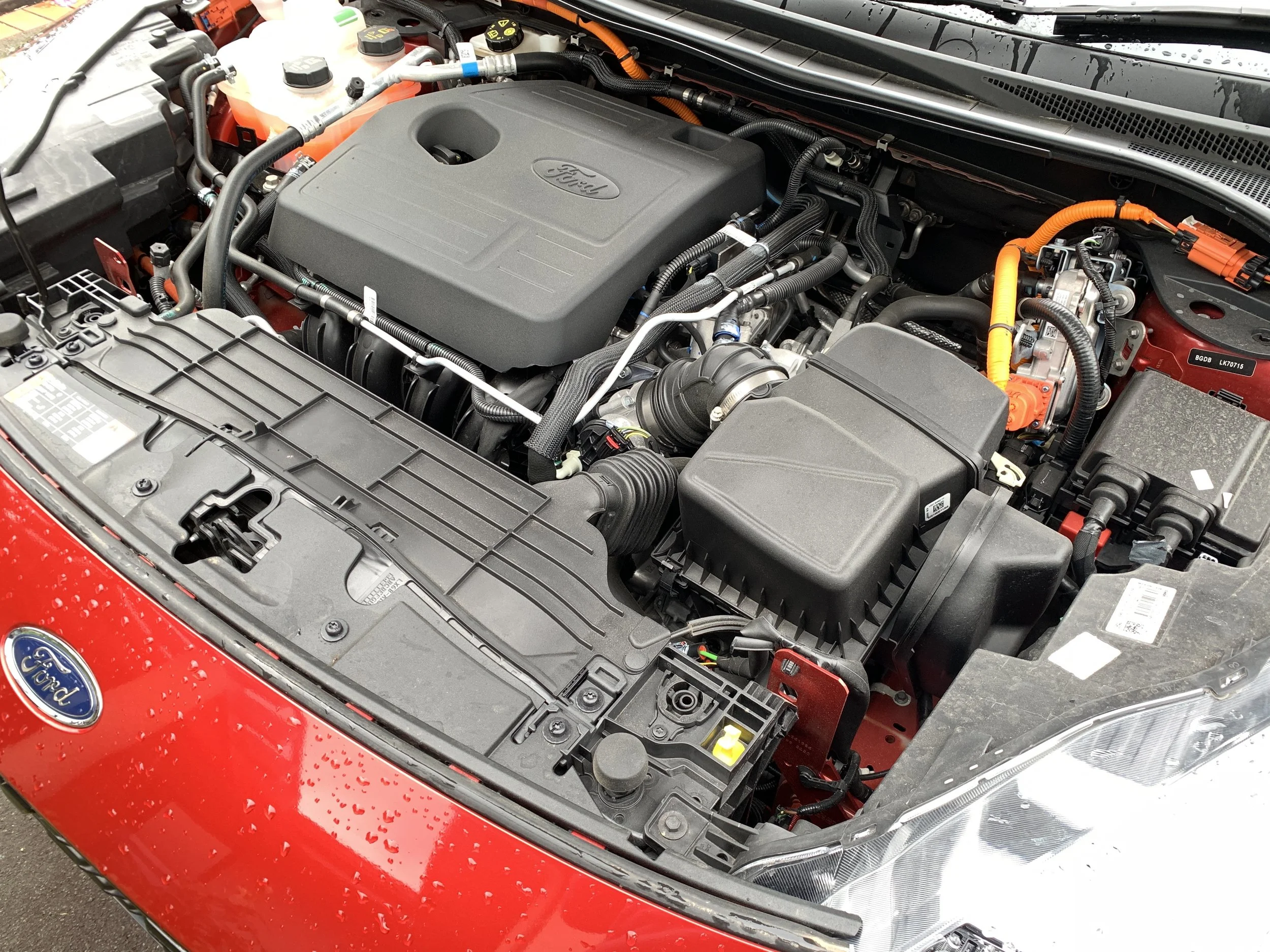Ford Escape ST-Line X PHEV review: Green scene contender
/An appealing plug-in electric drivetrain adds shine to a model already trading strongly on its specification, look and practicality.
Price: $66,990
Powertrain and economy: 2.5-litre four-cylinder petrol, 167kW@6250rpm, 350Nm (est); constantly variable automatic; front-wheel drive; official economy 1.5L/100km combined, CO2 33g/km.
Vital statistics: 4614mm long, 1675mm high, 2178mm wide, 2710mm wheelbase; luggage space 517-1423 litres.
For: Impressively flexible electric-assist abetted by rare ability to isolate battery for special EV-pure occasions; good ride quality; comfortable and strongly-specced.
Against: It’s not an SUV without all-wheel-drive; no obvious storage for home charge cable.
FOR Halloween, a nightmare tale: Plug-in hybrids with overly-desperate taste for fossil fuels are roaming our streets.
Those of us who regularly play with PHEV know all are not created equal. There are angels. There are devils. Some start working for good, then fall victim to the dark side. They tread a fine line.
We’re all learned that achieving impressive economy bragging rights always tends to hinge on your driving habits fitting a rather specific pattern of behaviour and, even when you do get it right, the whole experience can be disappointingly fleeting.
And we all know what happens should that electric range seems rather nominal. The heavy battery pack becomes an impediment dragging down the efficiency of a partnered petrol engine forced to work harder than necessary.
All pretty contradictory and annoying? Well, yes. It can be. That’s why you have to pick carefully. From my experience, some PHEVs play the game properly; others do not.
Ford’s intention to join this genre with Escape was announced more than a year ago, but factors –NZ lacking the priority status of key markets, an issue with the battery of early cars overheating – meant a product that should have been a 2020 starter has only recently landed.
As intended, the PHEV arrives in two flavours, a standard car and the $6000-dearer ST-Line X; the latter basically a battery-added version of the same-named most expensive pure petrol edition.
When Ford planned this model family, it put $10k between the two ST-Line Xs. However, now there’s a Government rebate which more than halves that difference. Tempting, right?
Well, yes it will be. But it’s best to remember it’s not entirely like versus like, in that while they mirror-image in look, seat count, comfort and driver assist features, a purely petrol Escape in flagship form has all-wheel-drive and an eight-speed automatic married to a 2.0-litre four-cylinder, whereas the PHEV is front-drive, CVT and a 2.5-litre.
So, regardless it still shapes up in a body format that’s what most new car buyers seem to want, through offering a decent amount of space inside and an air of practicality, really the PHEV is less sports utility than a crossover and is certainly setting on a different adventure.
Still, as much as its SUV substance has been diluted into more of a crossover blend – including with towing, down to 1200kg - there’s lots to sell it. The bottom line is that this is car is fighting for Green good and has no obvious demons. In some ways it’s overall a more likeable car than the equivalent petrol version.
One attraction will be the chassis tune. Though less sporty than the full-out petrol, it nonetheless feels lighter and more agile than other plug-ins, which is strange, because it weighs a quite hefty 1843kg. It’s also just as comfortable and sports as many swish finishing touches as the other ST-Line X.
Most of all, though, it appeals by simply being a better kind of PHEV, in part because it doesn’t require you to hold a degree in advanced sciences to understand what it is doing and mainly because it imparts impression it is enabled to deliver longer stretches of zero emissions driving than some rivals offer. The way they guts through the electrical impetus, you’d be forgiven for thinking some PHEVs are set up to dump their ohms as quickly as possible; a 20 minute drive and the battery is already down to half. The Ford seems a slower, more methodical and more thoughtful consumer.
Granted, perhaps the ‘PHEV for dummies’ approach goes too far in some respects. The CVT transmission is perfectly fine in normal use, but because there’s no facility to change gear it’s not at all involving like the petrol car’s transmission and, though the powertrain is clever, things can become a bit revvy if you need to move along.
As with the fully petrol model, there’s no traditional gear selector – instead there’s a rotary dial with P, R, N and D, with a button in the middle, marked ‘L’. As in ‘what the L’? Pressing this when driving downhill solved the mystery; it increases the amount of brake regeneration. Others use hand shifters. Ford’s way is … different.
The EV modes are accessed by a button on the dashboard. Each identifies as a symbol, admittedly quite a small one, in the main instrument cluster to remind which you’ve gone for.
Auto EV, EV Now and EV Charge seem obvious enough. The first two respectively enforce electric-petrol, the latter as the car decides, and prioritise electric pure. EV Charge, of course, uses the engine as a drive unit and generator to recharge the battery. The bonus feature, given it is something not all PHEVs have but should, is EV Later. It’s great. Say you’re driving between towns and have desire, on arrival, to smugly whizz around the streets in saintly silence on battery-only. It’ll allow this.
The tester clocked just under 400 kilometres’ driving comprising slightly more open road work as urban loitering and was mainly driven in Auto Now, the default. Consumption returns intrigued. As you’d expect, a lot depends on the speed, the terrain and the state of charge at departure.
To get any idea of what you’re getting into, it’s always good to work out the worst possible scenario. The heaviest hit will obviously result from letting the battery exhaust to the point where the engine has to do all the work. In that state, I saw 9.6 litres per 100km. Not brilliant, granted, yet by Escape standards, not so poor. The factory-claimed optimal for the gruntier, lighter 2.0-litre is 8.6L/100km.
So, if that’s as bad as it gets, how good can it be? Even in dual involvement mode, really good. With the battery fully in play and in a hearty state, I became used to seeing zero-point-something fuel burn results from the trip computer in daily operation. Not just when tootling around town but also while the car was cruising at 100kmh for periods of significant time.
Was I being too dainty with the throttle? For sure, it’s easy to fall into an unconscious habit of driving in the most economical manner possible, trying to get it to switch over to electric-only running as much as you can. That can sometimes be an enjoyable challenge. It can also lead to huge frustration.
Assuredly, the Escape works very well when you apply that approach. But it doesn’t demand it. It has enough of a likeable ‘I got this’ to its ways to impart impression it can also handle being treated as any normal car would. At same time, it will educate about how to hit its sweet spot. At journey’s end, the trip computer will deliver a summary of the distance travelled, your consumption, the kilometres covered on volts and an estimated time to recharge. Mostly these will make you smile.
If you decide on going whole hog EV prioritisation? Ford cites the 14.4KWh battery being up to feeding in up to 59km driving on just electric, which is reasonable. When you do go into that full EV mode, it does seem committed to remaining with it for the full hit. It’ll all come down to how and where you drive, but from my experience you’re going to get at least 48kms’ EV-pure driving.
When it comes to recharging, I can see owners wanting to buy into a wall unit or doing daily runs to a commercial recharger. The adapter kit for interplay with the household socket works fine and seems well designed, save that the cord could be longer, but the time you’ll spend hooked up is onerous; seven hours to 100 percent minimum. So, an overnight exercise. So grazing, which is plugging in whenever possible to keep the battery pepped rather than letting it drain, is the go. The more frequently you do that, the less petrol you'll use.
Speaking of. As much as the Escape lends opportunity to become a fully electric car if all your trips are short, you cannot ignore that, at heart, PHEVs are petrol cars. Sooner or later, they’re going to draw from that tank.
When it does resort to sucking hydrocarbons, Ford’s engine does seem to have some positive attributes. Though obviously not always a sipper, it at least is not too noisy. Quite often with PHEVs, the moment the engine takes up all the strain is a real downer; but with this one the transference is quite smooth and ongoing operation is just as suave. I’m not saying you cannot hear the engine, but its engagement is quite a different proposition to the Mitsubishi Eclipse Cross PHEV – surely a direct competitor (at full RRP) - I tested early this year. When it switched, it immediately felt heavily burdened; same goes for a Kia Sorento PHEV driven since (unsurprisingly with the Korean, as it’s a big seven-seater running a 1.6-litre turbo petrol). The Escape doesn’t.
Escape’s engine is obviously better when running with EV assist than without because, while its Atkinson Cycle hardware lends far higher efficiency than is achievable in a regular (Otto) engine, the known drawback of this tech – evidenced by the Ford – is a lack of puff down low. It needs the electric oomph to compensate for that.
While Ford doesn't break down the individual outputs of each power partner, nor provide total system torque output, it’s known the engine creates 200Nm on its own and, from how it interacts, I’d not be surprised if the motor wasn’t adding at least another 150Nm. No wonder it feels almost V6-ish when all works as one.
That’s a lot of extra assist, yes, yet even when abandoned the engine doesn’t ever feel exactly weak-kneed. Nothing like cubic capacity? Maybe that’s a factor. You notice this, too, when it’s acting as a generator to recharge the drive battery during a journey. There’s a specific gruff-toned element to this, and the revs do lift, but there’s no sense it’s a Mr Puniverse being asked to lift a Olympic record barbell.
The PHEV is definitely less athletic in its dynamic attitude than the fully petrol Escape. The extra weight of the battery and motor, the lack of involvement from the CVT, the fact that just two wheels are laying down grip.
Yet it’s not devoid of talent. Though that weight can cause more body lean, the chassis has genuine balance and the steering feel is good. It’s confident under braking. It also trumps the pure petrol editions for ride quality. Given ST-Line X runs big hoops, it is impressive how pleasantly the plug-in rides.
Beyond all that, the PHEV falls in line with the standard model, meaning a handsome, roomy design with an interior that will be familiar to anyone who has driven a Ford over recent years. In particular, think Focus with a taller roofline.
The thematic is posh-practical. There are a few cheap plastics, yet it has an underlying quality and the way everything is assembled feels very tight and impressive.
The digital displays are bright and clear, and layouts alter depending upon which drive mode you’re in. Plus, it lands the same stuff as the petrol pure model; so partial leather upholstery, clever “dynamic bending” LED headlights, a power tailgate, a 10-way power-adjustable driver’s seat with heating/memory for the front chairs, a panoramic sunroof, a 10-speaker B&O audio system and full self-parking ability.
The cabin lends plenty of space, with head- and legroom in the back both being good, and a decent boot, more than 500 litres if you slide the back seats forward a bit.
Even though it’s come late, the Escape PHEV has timed nicely. It benefits from a Government subsidy that was unknown when Ford NZ signed up and will be nicely settled in when cheaper, hybrid versions come in next year. All part of Ford NZ’s intention to make battery-assist the ‘go’ in all its passenger models from now on.
That’s a laudable aim, but let’s not forget PHEVs are a transition tech and, the way things are going in Europe, epicentre of this Blue Oval development, they might have a shorter lifespan than previously envisaged, with reforms to speed the transit to fully-electric vehicles and meet climate goals now looking to alienate these cars.
It’s a big change from current practice, which puts hybrids on a par with all-electric cars and has helped spur the industry to invest tens of billions of euros in the technology, and will hurt makers who have envisaged selling hybrids until at least the end of this decade as a bridge to fully battery electric vehicles.
We know times are changing. It’s just the changing pace that keeps us on our toes.

